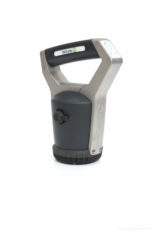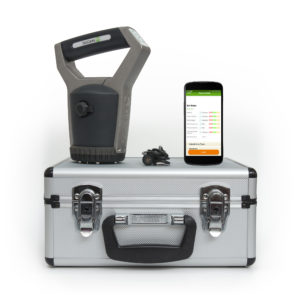
[From the last episode: We saw that each layer on the stackRelated to communications: A way of organizing parts of a complicated process (like communications) so that any task relies on tasks below it and feeds the tasks above it. Related to computing: A place in memory where you store “where was I?” information when you go from, say, one function into another. Before starting a new function, you store where you were in the old one so that, when the new function ends and you’re back in the old one, you can figure out where you were and continue on. has one or more standardsA way of doing something specific that has been agreed by multiple parties in an official manner. Some "standards" aren't official standards; the best ones have been established in an open fashion, where anyone with an interest can contribute and where large companies can't push little companies around. that can play there.]
We’re going to take a little break from the technology side of things and look at the impact that the IoTThe Internet of Things. A broad term covering many different applications where "things" are interconnected through the internet. can have. We’ll be doing a variety of examples like this over time. But most of them will come from the Industrial side of things, since the value that the IoT brings is much easier to identify – as you’ll see – than it is for many home applications. While the consumer IoT is struggling a bitThe smallest unit of information. It is a shortened form of "binary digit." Since it's binary, it can have only two values -- typically 0 and 1. to find real pain to assuage, there’s plenty of opportunity in industry.
SoilCares: Caring for Soil
Today’s example is a company called SoilCares out of the Netherlands. I happened to hear this story at an annual conference for sensorsA device that can measure something about its environment. Examples are movement, light, color, moisture, pressure, and many more. (the MEMS and Sensors Executive Congress). (Don’t worry about what MEMS means if you don’t know… it’s a technology often used for creating sensors, and we’ll look at it sometime in the future.)
For a really small country, the Netherlands has an outsized level of agriculture and ag science going for it. So it can be fertile ground, so to speak, for solving some of the world’s pressing agricultural problems – like figuring out how to feed the billions of people expected to populate the earth some years hence.
If you’re just tossing seeds into the ground and pouring on some water and maybe fertilizer, well, things might grow, but probably not optimally. After all, how do you know what the soil needs to nurture the plants properly? Maybe it already has all the goods; maybe it has some but not others.
For giant agribusiness farms in the US there’s plenty of money to harness technology. But what if you’re a small farmer in Africa or South America? Yes, you can test your soil. And it takes weeks to get results, and each test can be on the order of $50 to $75. Not easy for a shallow-pocketed farmer.
So does that mean that we should eliminate the small guy and turn everything over to MBA farmers? Perhaps not – that’s what SoilCares is all about.
Quick, Cheap, Local Analysis
Their systemThis is a very generic term for any collection of components that, all together, can do something. Systems can be built from subsystems. Examples are your cell phone; your computer; the radio in your car; anything that seems like a "whole." consists of a handheld unit – the SoilCares Scanner – that you drive into the soil to collect a sample. The Scanner contains a  spectrometerAn analysis tool that measures how something responds to different frequencies (or colors) of light. Those colors might not be visible to humans – like infrared or ultraviolet.; that spectrometer uses near-infrared light. A spectrometer shows which light frequencies are reflected off of (or travel through) some substance. It may not be obvious, but you can learn a lot from that information.
spectrometerAn analysis tool that measures how something responds to different frequencies (or colors) of light. Those colors might not be visible to humans – like infrared or ultraviolet.; that spectrometer uses near-infrared light. A spectrometer shows which light frequencies are reflected off of (or travel through) some substance. It may not be obvious, but you can learn a lot from that information.
If the notion of near-infrared is new to you, this means that the sensor shines infraredLight below the frequency of (or with longer wavelength than) visible light. The wavelength range is roughly from 800 nm to 1 mm. Near infrared is the range near the visible part of the spectrum, from 800 nm to 2500 nm. light on the soil sample and measures the reflections or how the light passes through the sample. The “infrared” portion means that the light used is not visible to us (it’s past the red limit, which defines one boundary of what we can see). But it’s not particularly far removed from what we can see – hence “near.”
What does this light tell us? Here’s where the power of the cloudA generic phrase referring to large numbers of computers located somewhere far away and accessed over the internet. For the IoT, computing may be local, done in the same system or building, or in the cloud, with data shipped up to the cloud and then the result shipped back down. and data techniques play a role. The SoilCares folks went all over the world taking soil samples and doing manual analysis on them. From that, they built up a databaseA structured way of storing data and relating different pieces of data to each other. (Like, which address belongs to which person.) There are “query” languages, the best-known of which is SQL, that let you enter data into the database, change data that’s already in the database, and retrieve data from the database. for each region. Loosely speaking, they can take the spectrometer results and compare them to what’s in the database to see what’s in (and what’s not in) the soil.
So the farmer runs the analysis and the results go up to the cloud (via a Bluetooth-connected phone). The cloud does its magic, and the farmer gets back recommendations for what might be needed in the soil.
Comparing to the Old Way
And this all happens in about 10 minutes, for way less than it costs today. (Each locality has a different serviceWe are used to purchasing products outright. "Services" is a new concept where you may or may not buy the product, but optional or mandatory services come with the product. Those services may have an ongoing cost separate from the purchase price. provider, so price details vary – but always much less than the old way.)
Ah, but the Scanner itself! That must be expensive! That’s the catch, right? Well, they actually sell the unit at cost. So yes, there’s a price there, but it’s not a giant profit-generator.
To be clear, there’s nothing wrong with making a profit, but, too often, profit expectations make such tools and services unaffordable for the little guy. SoilCares would appear to be out to help the little guy.
Note that SoilCares isn’t, at present, available in the US; the database isn’t set up here yet. They do hope to market in the US in the future.
IoT Breakdown
With each example like this, we’ll do a quick breakdown to relate the real-world equipment to the concepts we’ve been talking about.
So, relating SoilCares to the four basic IoT elements, we have:
- Sensing: the spectrometer is the sensor that measures the dirt.
- Communication: the measurements get transferred to the cloud, and the recommendations come back.
- Computation: analysis and comparison to the database happens in the cloud.
- Actuation: there is no actuation, since what comes back is information for the farmer; there’s no remote control of the Scanner.
(Image credits: SoilCares)

Hi – the above doesn’t give any test details. What’s it test for? NPKS, ph, conductivity…..?
Yeah, my focus here was more generally on the relationship to the IoT, assuming a non-agricultural-specialist audience. You can find more details on what they test for here:
http://www.soilcares.com/en/products/lab-in-the-box/